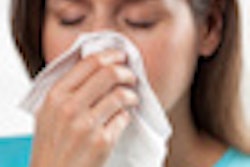Having declared a pertussis epidemic in July, the California Department of Public Health is recommending that all healthcare personnel, particularly those who have direct contact with infants and pregnant women, be immunized with Tdap to protect their patients and themselves.
Effective September 1, 2010, all employers covered by the Cal/OSHA Aerosol Transmissible Disease (ATD) standard are required to offer the Tdap vaccinations to employees who could be occupationally exposed to pertussis, according to a notice put out by the California Dental Association.
A dental practice, however, is not required to comply with the Cal/OSHA standard if all the following conditions are met:
- Dental procedures are not performed on patients identified with confirmed ATD or suspected ATD.
- The practice's Injury and Illness Prevention Program includes a written procedure for screening patients for ATDs that is consistent with current guidelines issued by the Centers for Disease Control and Prevention for infection control in dental settings, and this procedure is followed before performing any dental procedure on a patient to determine whether the patient may present an ATD exposure risk.
- Employees have been trained in the screening procedure in accordance with Injury and Illness Prevention Program standard.
- Aerosol generating dental procedures are not performed on a patient identified through the screening procedure as presenting a possible ATD exposure risk unless a licensed physician determines that the patient does not currently have an ATD.
To screen patients, dental personnel should notice if a patient appears to have a cold or is coughing. If the symptoms are apparent, dental personnel should ask the patient if he or she has been exposed to pertussis/whooping cough or has been diagnosed. Treatment should be rescheduled as needed.
Dental personnel who are coughing or experiencing symptoms similar to pertussis should refrain from exposing patients and coworkers and not report to work. An employer may require a medical clearance for an employee before the employee returns to work.
Copyright © 2010 DrBicuspid.com



















